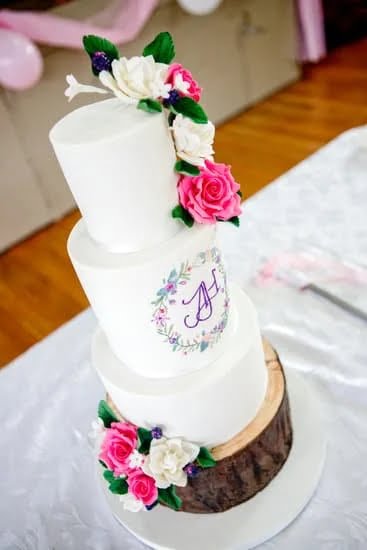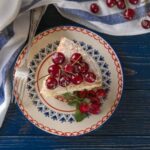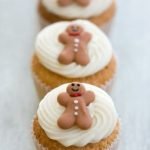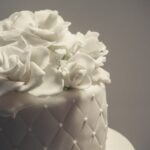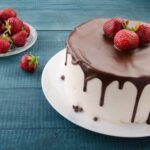Are you looking to elevate your cake decorating skills? Learn how to decorate cake with buttercream frosting, a versatile and delicious option for creating beautiful designs. Buttercream frosting is a popular choice among bakers due to its smooth texture and ability to hold intricate designs. In this article, we will explore the various techniques, materials, and tips for achieving stunning results with buttercream frosting.
Buttercream frosting is not only delicious but also offers endless possibilities for creativity in cake decorating. Whether you are a beginner or an experienced baker, mastering the art of buttercream decoration can take your cakes to the next level. From simple designs to more complex creations, buttercream frosting allows for customization and personalization that will impress any audience.
In this section, we will delve into the myriad reasons why buttercream frosting is a go-to choice for many bakers when it comes to cake decorating. We will discuss its appeal, versatility, and the endless opportunities it presents when it comes to creating visually stunning and delicious treats. So let’s discover the magic of buttercream frosting and unleash our creativity in cake decorating.
Materials and Ingredients
When it comes to decorating a cake with buttercream frosting, having the right materials and ingredients is key to achieving a beautiful and delicious end result. There are various types of buttercream frosting to choose from, including American buttercream, Swiss meringue buttercream, and Italian meringue buttercream. Each type has its own unique texture and flavor, so it’s important to select the one that best suits your preferences and the design of your cake.
In addition to the buttercream itself, there are several other ingredients you’ll need for decorating a cake with buttercream frosting. This includes powdered sugar, vanilla extract, food coloring (if desired), and any additional flavorings or extracts you may want to use.
It’s also important to have the right tools on hand, such as a cake turntable, offset spatula, piping bags and tips, bench scraper, and icing smoother. These tools will help you achieve smooth and professional-looking decorations on your cake.
Before diving into the decorating process, it’s important to ensure that you have all the necessary materials at your disposal. By selecting the right type of buttercream frosting and gathering all the required ingredients and tools, you’ll set yourself up for success in creating a beautifully decorated cake that tastes as good as it looks.
With this comprehensive list of materials and ingredients, you’ll be well-equipped to tackle the next steps in decorating your cake with buttercream frosting.
Preparing the Cake
Before you begin decorating your cake with buttercream frosting, it’s important to properly prepare the cake itself. Follow these step-by-step instructions to ensure that your cake is ready for a beautiful buttercream finish:
1. Leveling: Start by ensuring that your cake layers are level. Use a long serrated knife or a cake leveler to carefully trim off any domed tops to create an even surface. This will ensure that your cake has a professional and polished look once it’s frosted.
2. Filling: Once your cake layers are level, it’s time to add filling between the layers. Choose a delicious filling such as fruit preserves, chocolate ganache, or pudding, and spread it evenly over each layer of the cake.
3. Crumb-Coating: A crumb coat is a thin layer of frosting that helps seal in any loose crumbs from the cake, providing a smooth base for the final layer of buttercream frosting. Use an offset spatula to apply a thin layer of buttercream all over the cake, then chill it in the refrigerator for 30 minutes before applying the final coat of frosting.
By following these steps for preparing your cake, you’ll create a smooth and even canvas for decorating with buttercream frosting. Remember that proper preparation is key to achieving stunning results when using buttercream to decorate your cakes.
Now that you have prepared your cake layers for decorating with buttercream frosting, it’s time to explore different piping techniques in order to create various designs and textures on the cake. Check out our next section on Piping Techniques for tips and inspiration.
Piping Techniques
Creating Clean, Defined Edges
To achieve professional-looking borders and edges on your cake, it’s important to start with the right consistency of buttercream frosting. A medium to stiff consistency is best for piping borders and edging, as it holds its shape well.
Use a piping bag fitted with a round or star tip, depending on the design you want to create. Hold the piping bag at a 45-degree angle to the cake and apply even pressure as you pipe the border or edge.
Adding Intricate Pipework
For more intricate designs and pipework, such as lace patterns or intricate floral details, a finer piping tip is essential. A #1 or #2 tip allows for precise detailing and delicate work. It’s important to practice your technique on a flat surface before attempting intricate designs on your cake.
Creating Textured Designs and Patterns
Textured Buttercream Swirls
One popular technique for adding texture to a cake with buttercream frosting is creating textured swirls. This can be achieved by using a large open-star piping tip to create soft peaks of frosting on the surface of the cake. Simply apply even pressure as you pipe in a circular motion, allowing the ridges of the piping tip to create a beautiful swirled texture.
Ruffle Details and Petal Effects
To add delicate ruffle details or petal effects using buttercream frosting, use a petal or leaf-shaped piping tip. With gentle pressure, pipe small ruffles or petals onto the surface of the cake in overlapping layers to create a beautiful floral effect.
Overall, there are endless possibilities when it comes to decorating cakes with buttercream frosting using various piping techniques. Experimenting with different tips, pressures, and motions can lead to stunning designs and textures that will elevate any cake creation.
Color and Flavor
When it comes to decorating cakes with buttercream frosting, the options for adding color and flavor are endless. Whether you want a classic vanilla flavor with a pop of color or something more adventurous like a flavored buttercream, there are several techniques and options to consider when it comes to customizing your frosting. Below, we’ll explore some tips for adding color and flavor to buttercream frosting, including natural and artificial options.
Natural Ingredients
One of the simplest ways to add flavor and color to buttercream frosting is by using natural ingredients. Depending on the flavor you want to achieve, you can incorporate various extracts, citrus zests, or fruit purees into your frosting. For example, for a fresh lemon flavor and bright yellow color, you can add lemon zest and a splash of lemon juice to your buttercream. Similarly, for a smooth and creamy chocolate buttercream, try incorporating high-quality cocoa powder.
Artificial Coloring
If you’re looking for vibrant and intense colors that may be difficult to achieve using natural ingredients alone, artificial food coloring is a popular option. Gel or paste food coloring is recommended as it won’t alter the consistency of the buttercream as much as liquid food coloring would. To achieve pastel shades or lighter hues, start with just a drop or two of coloring before adding more as needed.
Flavor Combinations
The flavors added to the buttercream can complement the cake itself. For instance, if you’re decorating a vanilla cake, consider using almond extract in your buttercream for an added layer of deliciousness.
Or if you’re working on a chocolate cake, mint extract could be an excellent choice for both taste and visual appeal. Experimenting with different flavor combinations will not only enhance the overall taste but also provide an opportunity to create unique palettes that cater specifically to your preferences-opening up endless possibilities for creativity when decorating cakes with buttercream frosting.
Decorating Tips
Creating decorative cakes with buttercream frosting is a wonderful way to showcase your creativity and add a personal touch to any special occasion. Whether you are new to cake decorating or an experienced baker looking for fresh inspiration, there are countless techniques and designs you can explore with buttercream frosting. From simple, elegant designs suitable for beginners to more intricate and complex patterns that will challenge even the most seasoned decorator, the possibilities are endless.
One of the most common and easiest ways to decorate a cake with buttercream frosting is by using a piping bag and various tips. With just a few basic piping techniques, such as stars, rosettes, and swirls, you can create beautiful designs on your cakes. For those who want to take it a step further, experimenting with different piping tips and combinations can result in stunning textures and patterns on the cake’s surface.
In addition to piping techniques, there are other creative ideas for decorating cakes with buttercream frosting. For example, using edible flowers or other natural decorations can add a pop of color and elegance to your cake. Or consider incorporating stencils or templates to create precise designs on the cake’s surface. With some practice and patience, you can achieve professional-looking results that will surely impress your friends and family.
| Buttercream Frosting Technique | Description |
|---|---|
| Piping Techniques | Using various piping tips to create different designs such as stars, rosettes, and swirls. |
| Natural Decorations | Adding color and elegance using edible flowers or other natural decorations. |
| Stencils/ Templates | Creating precise designs by incorporating stencils or templates on the cake’s surface. |
By exploring different techniques and being open to new ideas, you can elevate your cake decorating skills while also enjoying the process of creating something truly unique. Whether it’s a birthday celebration, wedding reception, or simple gathering with loved ones, a beautifully decorated cake will undoubtedly leave a lasting impression. So don’t be afraid to experiment and have fun with decorating cakes using buttercream frosting.
Troubleshooting
When it comes to decorating a cake with buttercream frosting, there are a few common issues and mistakes that can arise. However, with the right knowledge and tips, these problems can easily be solved. Here are some of the most common issues when decorating with buttercream frosting, along with solutions and tips for troubleshooting:
1. Air Bubbles: One common issue when piping buttercream frosting is the presence of air bubbles, which can result in an uneven texture on the cake. To prevent this, make sure to gently tap the piping bag on a flat surface before starting to pipe. Additionally, always use your hands to gently press out any air pockets that may have formed inside the bag.
2. Wilting or Melting Decorations: If you find that your buttercream decorations are wilting or melting on the cake, this could be due to warm temperatures or humidity. To remedy this issue, place the frosted cake in the refrigerator for a short period of time before adding any detailed decorations. This will help ensure that the buttercream sets properly and holds its shape.
3. Crumbly Frosting: Sometimes, buttercream frosting can become crumbly and difficult to work with, especially if it has been over-mixed or if too much liquid has been added. To fix this issue, try adding a small amount of additional powdered sugar to thicken and stabilize the frosting. You can also refrigerate the frosting for a short period of time to help it firm up before continuing to decorate.
By keeping these troubleshooting tips in mind, you’ll be better equipped to handle any issues that may arise when decorating cakes with buttercream frosting. With patience and practice, you’ll be able to achieve beautiful results every time.
Storage and Serving
When it comes to storing and transporting a cake with buttercream frosting, it is important to take proper precautions to maintain the design and flavor of the cake. After decorating the cake, it is essential to keep it at room temperature for the buttercream to set properly.
Once the frosting has had time to set, the cake can be stored in an airtight container or cake carrier at room temperature for up to 3 days. If you need to store the cake for longer than that, it is best to refrigerate it.
When refrigerating a buttercream-frosted cake, it is important to let the cake come to room temperature before serving. This will allow the buttercream frosting to soften, resulting in a better texture and taste. To prevent any condensation from forming on the cake while in the refrigerator, place toothpicks around the top of the cake and cover it with plastic wrap.
Transporting a buttercream-frosted cake can be tricky, but there are some tips that can help ensure your cake arrives safely at its destination. It is best to transport a chilled buttercream-frosted cake as this will help prevent any smudging or melting of the frosting during transportation.
Additionally, placing non-slip matting underneath the cake box or carrier can help prevent any sliding or shifting of the cake during travel. By following these tips, you can ensure that your beautifully decorated buttercream-frosted cake stays intact and delicious when presented and served.
Conclusion
In conclusion, buttercream frosting is a versatile and delicious option for decorating cakes. With its smooth texture and ability to hold various shapes, it offers endless possibilities for creating stunning designs and textures on your baked creations. Whether you’re a beginner or an experienced baker, there are numerous piping techniques and creative ideas to explore when using buttercream frosting to decorate cakes.
When it comes to decorating a cake with buttercream frosting, the key lies in using the right tools and techniques to achieve the desired result. From leveling and crumb-coating the cake to exploring different piping techniques, this article has provided a detailed guide on how to prepare, decorate, store, and serve a cake frosted with buttercream. Additionally, the tips for troubleshooting common issues and mistakes will help ensure that your decorating experience goes smoothly.
Overall, learning how to decorate cake with buttercream frosting opens up a world of creativity in baking. Experimenting with colors, flavors, and designs can be an enjoyable experience that yields beautiful results. So go ahead and give it a try – let your imagination run wild as you explore the endless possibilities of creating edible works of art with buttercream frosting.

Welcome to our cake decorating blog! My name is Destiny Flores, and I am the proud owner of a cake decorating business named Cake Karma. Our mission is to provide delicious, beautiful cakes for all occasions. We specialize in creating custom cakes that are tailored specifically to each customer’s individual needs and tastes.

